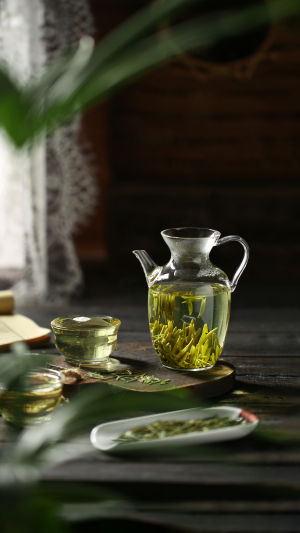Green tea is a beverage consumed daily, and many enjoy its refreshing taste. However, despite its popularity, people often have questions about green tea.
One common concern is the darkening of the tea color over time. Does the color change indicate a problem with the tea? What impact does this darkening have on green tea's flavor and health benefits?
In reality, the darkening of the tea broth is not a flaw in the tea leaves but rather an inherent characteristic of green tea. This transformation in color, affecting its brightness and texture, can indeed influence the overall taste.
The vibrant yellow-green hue in green tea broth primarily arises from tea polyphenols and chlorophyll.
Catechins, comprising 60-80% of tea polyphenols, play a crucial role in this coloration. However, when green tea is left exposed for an extended period, various factors like air, light, and temperature trigger oxidation in catechins.
This oxidation process results in the formation of brown substances, intensifying bitterness and astringency. Additionally, chlorophyll undergoes a pheophytinization reaction, producing further brown substances that contribute to the darkening of the tea soup.
The alteration from the original yellowish green to a darker shade signifies the changing composition of the tea, impacting both its color and taste. The darkening of the tea broth is a natural occurrence and does not adversely affect human health.
The glossy appearance of green tea broth is linked to the influence of oxidation products, including caffeine and tea polyphenols. Their reaction leads to precipitation, with lower temperatures resulting in more significant sedimentation. Tea polysaccharides and calcium ions can expedite this reaction, causing the tea soup to become cloudy and adversely affecting its taste.
Moreover, the interaction between amino acids in the tea and oxidation products forms polymers. Amino acids are essential for the fresh taste of green tea. If the coordination between amino acids is disrupted, the freshness diminishes, leading to pronounced astringency or a thin tea flavor.
Therefore, when the tea broth darkens, it is often due to prolonged brewing or leaving the tea unused for an extended period. This is a normal occurrence and not indicative of the tea's quality.
Even high-quality tea may exhibit this phenomenon. Importantly, the darkening primarily impacts green tea's taste and appearance without harming human health.
In conclusion, consuming freshly brewed green tea while it is still hot is advisable to retain its optimal freshness and flavor. Additionally, using non-chlorinated water for brewing is recommended, as chlorinated tap water, strongly oxidizing and containing calcium ions, can contribute to the darkening of the tea soup.





